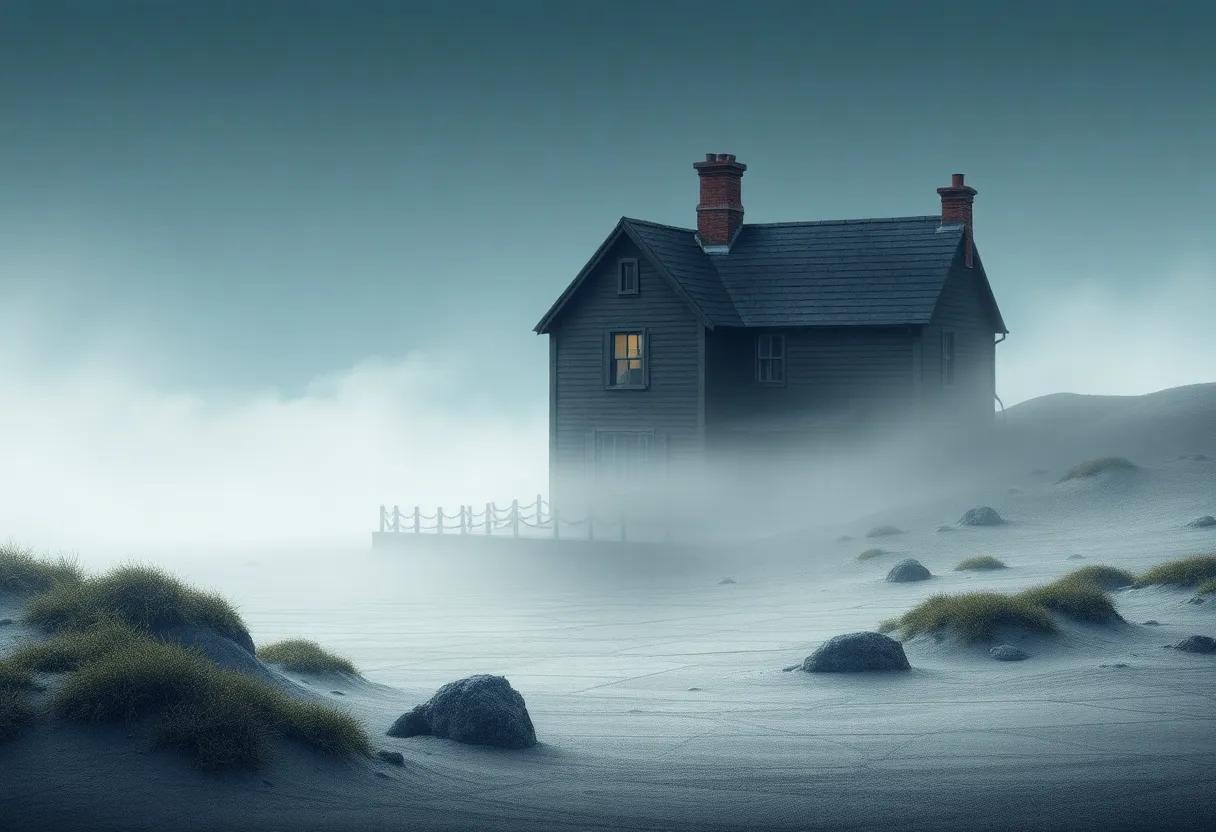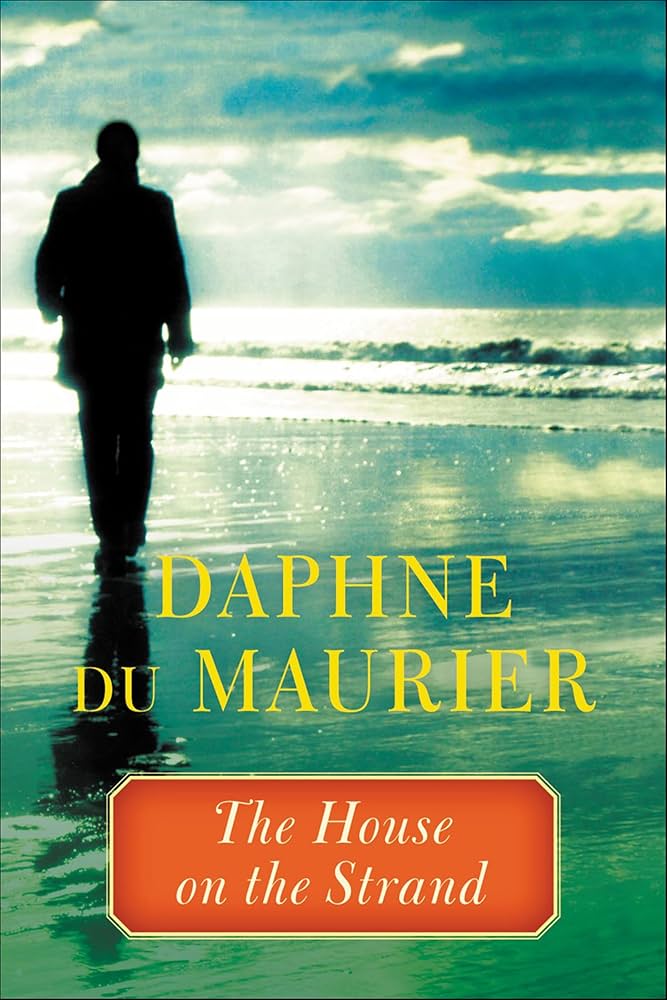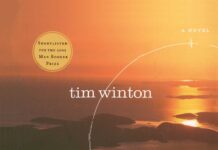In the shadowy corridors where past and present converge, Daphne du Maurier’s The House on the Strand invites readers to journey beyond the ordinary bounds of time. delves into this evocative novel’s intricate weaving of temporal layers and enigmatic human experience. This exploration not only uncovers the haunting allure of du Maurier’s narrative craftsmanship but also reflects on the unsettling intersections between memory, identity, and the relentless pull of history. As the lines between reality and illusion blur, the book beckons us to consider how time shapes-and sometimes distorts-the very essence of our lives.
The Intricate Dance Between Past and Present Explored through Du Maurier’s timeless Narrative

In du Maurier’s narrative, time does not flow linearly but folds upon itself, creating a seamless corridor between the past and the present. The protagonist’s experiences become a mirror reflecting the complexities of human consciousness grappling with fragmented realities. As he slips between centuries, the boundary between history and memory blurs, inviting readers to question whether the past is ever truly gone or simply waiting to be rediscovered. This interplay enriches the story with layers of meaning, making the novel not just a journey through time, but a meditation on the enduring grip of memory and desire.
The novel’s tapestry is woven with vivid contrasts and recurring motifs that highlight the enduring resonance of history within modern existence. Consider the following elements that drive this intricate dance:
- Temporal Displacement: Characters inhabit overlapping timelines, creating tension and mystery.
- Landscape as Memory: The Cornish setting transforms into a living archive,where past and present coexist.
- Psychological Duality: The protagonist’s identity fractures between two worlds, symbolizing inner conflict.
| Element | Importance |
|---|---|
| Time Slips | Challenge perceptions of reality |
| Isolation | Highlights internal struggle |
| ghostly Echoes | Connects present to past |
Unraveling the Layers of Psychological Suspense Within the House on the Strand’s enigmatic Plot

Daphne du Maurier’s narrative skillfully ensnares readers in a world where time is not merely a backdrop but an active, shifting force. The psychological suspense stems from the protagonist’s gradual erosion of reality as he slips in and out of a 14th-century existence via a mysterious drug. This fluidity blurs the boundaries between past and present,sanity and hallucination,prompting us to question the reliability of perception itself. Du Maurier ingeniously crafts a labyrinthine experience where the mind’s fragility becomes palpable-each moment tinged with creeping uncertainty and subtle dread.
The tension is amplified through key elements that underlie the story’s enigmatic allure:
- Temporal Dislocation: The seamless yet unsettling transition between centuries destabilizes the protagonist’s identity.
- Obsession and Isolation: A self-imposed detachment grows,revealing the destructive potential of unchecked curiosity.
- The Unseen Threat: The intangible menace lurking unseen symbolizes inner turmoil and external danger.
These facets merge to create a tension-filled atmosphere where the mind’s darkest corridors are explored-without ever fully exposing their secrets.
| Element | Effect on Suspense |
|---|---|
| Drug-Induced Time Travel | Destabilizes reality, heightens unpredictability |
| Historical Intrigue | Creates layered narrative tension |
| protagonist’s Mental Decline | Elicits empathy tinged with apprehension |
How Time Travel Serves as a Metaphor for Obsession and Escapism in the Story’s Core Themes

The mechanism of time travel in The House on the Strand is much more than a mere plot device; it morphs into a profound metaphor, encapsulating the protagonist’s descent into obsession and the alluring allure of escapism. As the lines between past and present blur, the narrative delves into the psychological captivity that time travel enforces. The protagonist’s repeated voyages into the 14th century represent an addictive retreat from the stark realities of his own life. Each journey beckons with the promise of excitement and purpose, but gradually, the urge to relive history becomes a compulsion that erodes his sense of self and connection to his actual world.
Within this exploration, Du Maurier cleverly uses time travel to highlight the complexities of human desire and dissatisfaction. The protagonist’s fixation on the past reveals a global tension between confronting personal struggles and the temptation to escape them. This tension is mirrored in the narrative’s subtle cues:
- Isolation vs. Connection: Time travel isolates the protagonist from real relationships, as his obsession draws him deeper into solitary experiences.
- Reality vs. Fantasy: the past presents a more vivid, albeit perilous, reality that tempts him away from the mundane present.
- Control vs. Powerlessness: The fantasy of time travel contrasts starkly with the protagonist’s actual impotence in shaping his life’s trajectory.
| Theme Aspect | Symbolism through Time Travel |
|---|---|
| Obsession | Repeated escapades into a romanticized past |
| Escapism | Temporal dislocation as refuge from present turmoil |
| Identity | Blurring lines between self and historical persona |
Through this richly woven metaphor, du Maurier invites readers to reflect on how obsession and escapism, though often cloaked in enchantment or excitement, can distort reality and fracture the human psyche. The house on the strand thus stands as both a literal and figurative crossroads, where time’s passage is not just experienced but deeply contested.
The Role of the Welsh Landscape in Shaping the Atmosphere and Mood of the Novel

In Daphne du Maurier’s The House on the Strand, the Welsh landscape is not merely a backdrop but a living, breathing character that permeates the novel’s atmosphere.The rugged coastlines, ancient castles, and rolling moorlands evoke a sense of timelessness, anchoring the story in a realm where past and present collide. This terrain’s wild beauty and isolation mirror the protagonist’s internal turmoil, amplifying the novel’s mood of eerie suspense and melancholic fascination. Du maurier’s vivid descriptions invite readers to lose themselves in the mist-clad valleys and shadowy woods, where the boundaries between reality and fantasy blur with unsettling ease.
The landscape’s influence is woven through the sensory experiences that shape the emotional texture of the narrative.Through you can almost hear the crashing waves and feel the biting chill of the moorland air, contributing to a palpable tension throughout the story. Consider the interplay of natural elements that set the tone:
- Stormy Seascapes: Symbolize turmoil and uncertainty.
- Mysterious Ruins: Invoke the weight of history and secrets.
- Isolated Villages: Amplify feelings of solitude and detachment.
- Dense Woods: Create a claustrophobic sense of entrapment.
| Landscape feature | Emotional Impact |
|---|---|
| Clifftops | Heightened suspense and danger |
| Hidden Coves | Secrets and forbidden encounters |
| Ancient Pathways | Connection between eras |
| Moorlands | Loneliness and desolation |
Examining the Narrative Structure and Its Impact on Readers’ Perception of Reality and Mystery

Daphne du Maurier masterfully constructs a narrative that blurs the boundaries between past and present, reality and illusion. The novel’s structure, weaving together strands of time through the protagonist’s immersive experiences, challenges readers to question their own grasp of truth. This layered storytelling technique engages the mind actively, encouraging a sense of disorientation that mirrors the character’s internal conflict. The seamless shift between eras is not merely a gimmick but an invitation to explore the fragile nature of memory and consciousness, prompting readers to become participants in uncovering the story’s elusive mysteries.
Embedded within the narrative is an intricate web of devices that heighten the tension between the known and unkown. Du Maurier employs:
- Shifts in temporal outlook that dissolve linear expectations,
- Ambiguous narrative voices that destabilize certainty,
- Symbolic motifs that echo throughout the novel, reinforcing themes of entrapment and desire.
To illustrate, the table below explores how these techniques interplay to manipulate perception:
| Narrative Element | effect on Reader | Example from the Novel |
|---|---|---|
| Temporal Shifts | Destabilizes linear time, evokes curiosity | Traveling between 20th-century Cornwall and 14th-century events |
| Unreliable Narration | Creates suspense, doubts truth | Protagonist’s conflicted perceptions of reality |
| Recurring Symbols | Highlights theme of entrapment and fate | The ominous stone that triggers time travel |
Character Complexity and Moral Ambiguity as a Driving Force Behind Reader Engagement
In The House on the Strand, du Maurier masterfully blurs the lines between protagonist Dennis’s moral compass and his increasingly questionable actions, crafting a rich tapestry of psychological intrigue.Rather than presenting characters as purely good or evil, she immerses readers in the internal conflicts that make Dennis both relatable and unsettling. His escapism into the 14th century through the experimental drug isn’t just a fantastical plot device; it mirrors his ethical ambiguity as he becomes entwined in timelines and choices that challenge his sense of right and wrong. this complexity encourages readers to question their own judgments about loyalty, desire, and consequence, pulling them deeper into the narrative.
By embracing such moral ambiguity, du Maurier invites us to consider:
- The allure of escapism and its consequences on personal identity.
- The fragility of human desires amidst historical and moral dilemmas.
- The interplay between past and present impacting decision-making and self-perception.
| Aspect | Dennis’s Actions | Reader Response |
|---|---|---|
| Moral Ambiguity | Engages in deceit and betrayal in both timelines | Sympathy mixed with discomfort |
| Character Complexity | Together victim and perpetrator | Intrigued by layered personality |
| Psychological Depth | Struggles with addiction and escapism | Reflects on human vulnerabilities |
Symbolism Embedded in Architectural Details and Their Connection to Historical Memory
The intricate carvings on the ancient stone walls and the intentional placement of stained glass windows in The House on the Strand serve not merely as decorative elements but as portals into the layered past.These architectural details act as silent narrators, whispering stories of forgotten hopes, tragedies, and the cyclical nature of time. Each motif-from twisting vines symbolizing eternal life to the heraldic emblems subtly etched above doorways-connects the present with epochs long gone, bridging generations through tangible symbolism. In this, du Maurier crafts a house that is both a physical space and a repository of collective memory, inviting readers to decode history through design.
Exploring these details reveals a delicate balance between concealment and revelation, much like the narrative itself. The floor tiles, arranged in shifting geometric patterns, can be seen as metaphors for the intertwined destinies of the characters and the blurred lines between reality and fantasy. Consider the following key symbols featured prominently within the house:
- Labyrinth motifs: Signify the complex paths through time and memory
- Gothic arches: Represent gateways to other dimensions and eras
- Faded tapestries: illustrate the fragility of recollection and history
| Architectural Detail | Symbolic Meaning | historical Reference |
|---|---|---|
| Stained Glass Windows | Windows to the past and spiritual insight | Medieval ecclesiastical art |
| Stone Gargoyles | Protectors warding off evil and chaos | Gothic architectural tradition |
| Wooden beams | Roots deeply embedded in heritage | Rustic craftsmanship of rural England |
The Quiet Tension Between Science and Supernatural elements That Du Maurier seamlessly Balances
Daphne du Maurier masterfully walks a tightrope where empirical inquiry collides with the unexplainable,crafting a narrative that both grounds and mystifies its readers. Throughout The House on the Strand, the protagonist’s experimentation with a strange drug blurs the lines between medical science and an otherworldly experience, inviting us to question what lies beyond the tangible world. This subtle tension keeps the story suspended in an uneasy balance, where every scientific attempt to control or understand echoes with the haunting unpredictability of the supernatural.The drug itself, a symbol of modernity and human curiosity, becomes a gateway – not merely to another time, but to realms inaccessible by logic alone.
This delicate interplay can be distilled into several thematic consistencies that Du Maurier explores with quiet precision:
- Temporal Dislocation: The overlap between present-day examination and past lives challenges the notion of linear time.
- Scientific Hubris: The protagonist’s reliance on technology and pharmaceuticals reflects humanity’s desire to conquer the mystical, often without full understanding.
- Unseen Forces: The narrative suggests the persistence of unseen energies and spirits that defy rational clarification,hinting at the supernatural lurking beneath scientific inquiry.
| Aspect | Scientific Element | Supernatural Element |
|---|---|---|
| The Drug | Pharmacological experiment | Portal to past lives |
| Time | Linear, measurable | fluid, cyclical |
| Perception | Objective observation | Subjective, immersive experience |
Recommendations for Readers Seeking a Blend of Gothic Mystery and Psychological Thriller Elements
For those captivated by the eerie ambiance of Gothic literature and the intricate psychological layers found in thrillers, this novel offers a seamless fusion that will satisfy both cravings. The narrative’s haunting atmosphere is punctuated by an exploration of the human psyche that blurs the boundaries between reality and delusion. Readers will find themselves drawn into a world where the past and present entwine, creating tension that is as much internal as it is indeed external. This dual focus invites a deeper contemplation of memory, identity, and the sometimes perilous allure of escapism.
To enrich your reading experience, consider approaching the story with these focal points in mind:
- The role of setting as a character: observe how the landscape and architecture shape mood and influence the protagonist’s mind.
- Psychological duality: track the protagonist’s oscillation between two worlds and the emotional undercurrents driving this conflict.
- Symbolism hidden in suspense: decode the metaphors that link time, memory, and fate throughout the story.
| Element | Description | Effect on Reader |
|---|---|---|
| Temporal Displacement | Shifts between present and past timelines | Creates suspense and reflective tension |
| Unreliable Narration | Narrator’s blurred reality | Engages critical interpretation and empathy |
| Gothic Imagery | Foggy moors, ancient ruins, mysterious estates | Evokes atmosphere of dread and beauty |
The Enduring Influence of Daphne du Maurier’s Writing Style on Modern Mystery and Suspense Genres
Daphne du Maurier’s writing style remains a cornerstone in the evolution of modern mystery and suspense literature. Her deft manipulation of atmosphere and psychological depth creates an immersive experience that many contemporary authors strive to emulate. Du Maurier’s ability to intertwine the ethereal with the ordinary, blurring the boundaries between reality and the supernatural, has fostered a narrative tension that breathes life into every sentence.This technique not only captivates readers but also encourages a slower, more contemplative engagement with the unfolding mystery. Her influence is evident in the way modern suspense writers build characters who are as complex and enigmatic as the plots they inhabit, enhancing the emotional stakes and enriching the narrative layers.
Beyond atmospheric storytelling, du Maurier’s work showcases a masterful use of temporal shifts and non-linear narrative structures, elements that have now become staples within the genre. Her nuanced pacing and careful deployment of secrets reveal the power of suggestion over explicit revelation, inviting readers into a labyrinth of psychological intrigue rather than straightforward detective work. Modern authors often echo her intricate character dynamics and ambiguous moral landscapes, which encourage readers to question truth and perspective. Consider the following table illustrating key stylistic elements pioneered by du Maurier and their modern adaptations:
| Du Maurier’s style Element | Modern Genre Adaptation |
|---|---|
| atmospheric suspense through setting | Moody, immersive environments |
| Psychological complexity of protagonists | Multidimensional character arcs |
| Blurring reality with supernatural hints | Unreliable narrators and ambiguous endings |
| Non-linear time frames | Flashbacks and intertwined timelines |
- emotionally charged secrets: characters’ hidden pasts shape present tensions.
- Tension through restraint: subtle clues outweigh graphic revelations.
- Atmospheric world-building: setting functions almost as a character itself.
A Closer Look at Daphne du Maurier’s Life and Career and How They Informed This Captivating Tale
Daphne du Maurier’s unique blend of history, psychology, and the supernatural in The House on the Strand is deeply rooted in her own life experiences and the cultural milieu she inhabited. Growing up in Cornwall, the mysterious landscapes and ancient ruins became a wellspring of inspiration, infusing her narratives with a palpable sense of place and time. Her fascination with the past,particularly the medieval and Tudor eras,is not merely academic but emotive-reflecting her personal connection to the land and the layers of history it conceals. This intimate relationship with her environment allows du Maurier to craft a story where time folds upon itself, weaving reality and hallucination into a seamless, haunting tapestry.
Moreover, du Maurier’s introspective nature and exploration of human psychology enrich the novel’s narrative complexity. Her characters frequently enough grapple with identity, memory, and the thin lines between obsession and escape. Drawing from her own bouts of isolation and the era’s shifting social dynamics, she embeds themes of control, freedom, and vulnerability into the fabric of the story. the novel’s structure cleverly mirrors this tension by intertwining three different time periods, a narrative device that perhaps symbolizes du Maurier’s own attempt to understand the imprint of history on the present.
| Aspect | Life Influence | Reflected in Novel |
|---|---|---|
| Cornish landscape | Childhood environment | Mystical, atmospheric setting |
| Historical Fascination | Interest in Tudor era | Time-shifting narrative |
| Psychological Depth | Personal introspection | Complex character struggles |
| Social Context | Mid-20th-century change | Themes of control and escape |
As the final pages of close, one is left with a lingering sense of fascination and contemplation.This insightful examination peels back the layers of du Maurier’s intricate narrative, inviting readers to wander between past and present, reality and illusion. Whether you seek a deeper understanding of the novel’s haunting allure or simply wish to revisit its enigmatic corridors through a fresh lens,this exploration stands as a thoughtful companion. it reminds us that some mysteries, much like time itself, resist simple answers-and perhaps that is where their true power lies.











